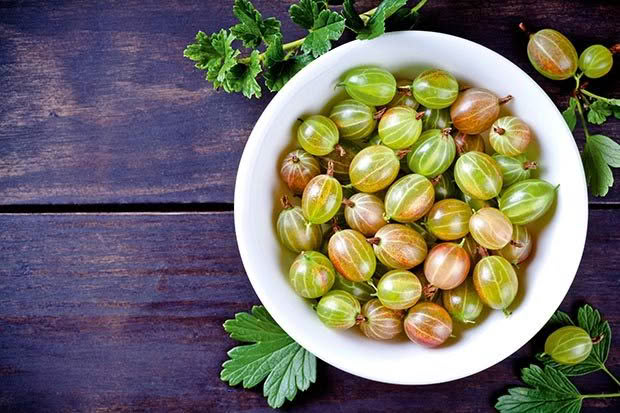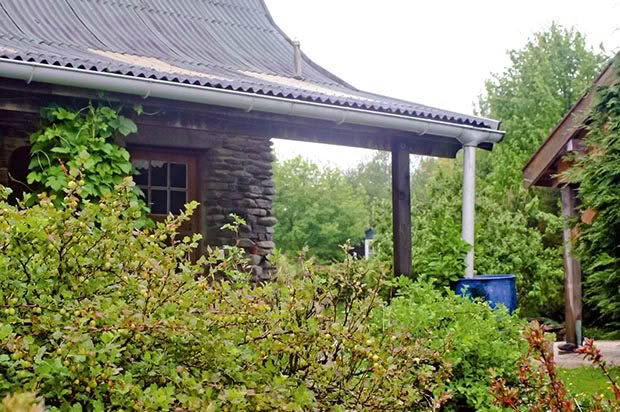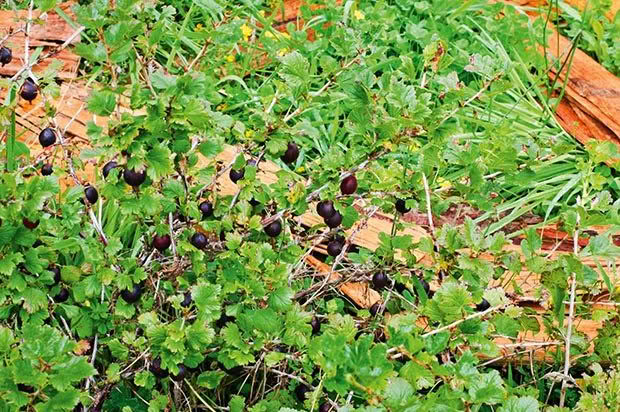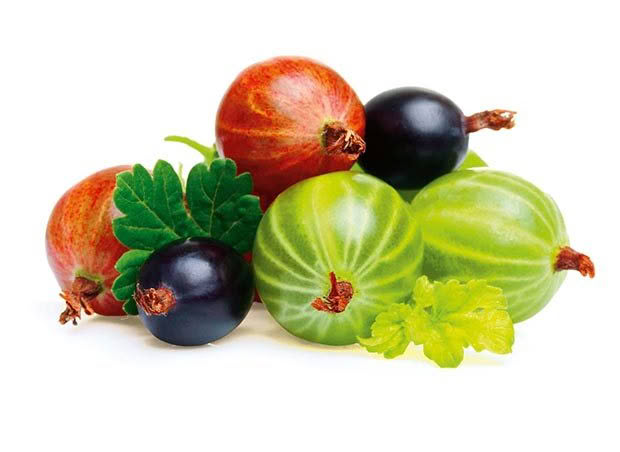A guide to growing gooseberries in New Zealand

The gooseberry is one of those plants which only gets better and better with age.
Words: Ben Gaia
The old people always seem to grow top prize-winning gooseberries. My 84-year-old neighbour Kate used to entreat me to see her hydrangeas, large seedling avocado trees, and finally her prize gooseberries. They were small bushes, carefully tended, horribly thorny, but covered in glowing red fruit the size of plums, nothing like the old, tiny, green, hard sour lumps of my childhood memories.
“You must come and dig up a bush this winter,” she would say, a twinkle in her eye at the thought of gooseberry-related delights that awaited me as a future connoisseur. Gooseberry jam, crumbles, custard, puddings, smoothies. Delicious.
These very typical New Zealand fruit were inherited from our British settler past and they thrive on the West Coast, especially if you have the canny, green-fingered talents of a retiree and treat them with the attention they crave. You can bonsai them in individual pots – large if possible to retain water and well mulched for summer – so they are mobile and you gain better positions in the sun for ripening fruit. If well-fed, those green bullets do indeed swell and ripen to red, orange, or even purple berries, bursting with tart (but not sour), ripe goodness in summer. Speak to them, tell them stories, sing to them, etc. A gramophone will suffice.
Gooseberries are popular as a feature in cottage gardens in their ideal tubs like coal buckets, old baths or coppers and other antique-looking garden art. Like a good bonsai, the tub needs to sit in a saucer which retains water, but not so it soaks the pot base – sit it on a bed of gravel within the saucer.

The picture above shows my ever-vigilant organic friends’ collection in full fruit over summer. Their bushes are above waist height, planted into the ground, and mulched with sphagnum moss for weed suppression and moisture retention.
The main disadvantage of these plants is that they are very thorny, similar in shape and pointedness to the native matagouri or ‘wild Irishman’ scrub so you will get many a punctured finger trimming twigs and opening up the bushes with secateurs. This kind of pruning is a good idea though for helping the fruit to bask in those valuable sugar-yielding solar rays.
Gooseberries are in the Ribes family so they are basically a giant currant. The photo below shows these really sweet ‘black’ gooseberries, another successful lifestyle orcharding experiment at my friend Rob Warman’s place. These are a special variety which he seems to be able to reproduce with large cuttings. These are fruiting well and the ripe, dark fruit is really not sour at all – you begin to see why the kiwifruit was originally known as the Chinese gooseberry.
Rob’s ones are mulched with large woodchips, mainly to keep the weeds down and beat grass competition. They are also liberally fed with cow manure, compost and other goodies.

VARIETIES TO TRY
Pax: dark red when fully ripe, large and sweet berries but requires pruning to thin out and shape its vigorous, spreading nature, virtually spineless at maturity.
Invicta: mildew-resistant, heavy crops of large, green-pink fruit which can be eaten raw, frozen, or turned into jam or
a pie filling, very thorny.
Monarch: slightly reddish fruit, requires pruning, very thorny but delicious berries.
Farmers Glory: best flavoured for cold climates, green-claret red fruit, good in cooking, vigorous, spreading plant.
BEN’S 7 TIPS FOR GROWING GREAT GOOSEBERRIES
• Along with other thorny things like totara and gorse, cattle will avoid them unless fed hard, but horses or goats will not blink at the odd spine, so you do need to protect them.
• They should be grown near the house so you can talk to them.
• Birds can be a problem so hang up old CDs and build elaborate scarecrows with battery timers and big hats. Net the bushes if desperate.
• Alternatively, build a lovely wrought iron fruit cage with detachable netting and walk-in doors.
• Thin out the crop to enable the remaining fruit to get bigger, and cook up the green fruit.
• Like currants, they thrive in high latitudes and cold arctic climates – I know they grow very well in northern Scotland – which would suggest they will do better the further south you go in New Zealand .
• As time goes by, the bushes improve in size of fruit and quantity of harvest, one of those few plants that improves with age.

About the author
Ben Gaia grows trees in the extreme climate of the West Coast of the South Island and runs a mail order nursery for organic fruit and forestry trees, www.dialatree.co.nz
Love this story? Subscribe now!
 This article first appeared in NZ Lifestyle Block Magazine.
This article first appeared in NZ Lifestyle Block Magazine.
